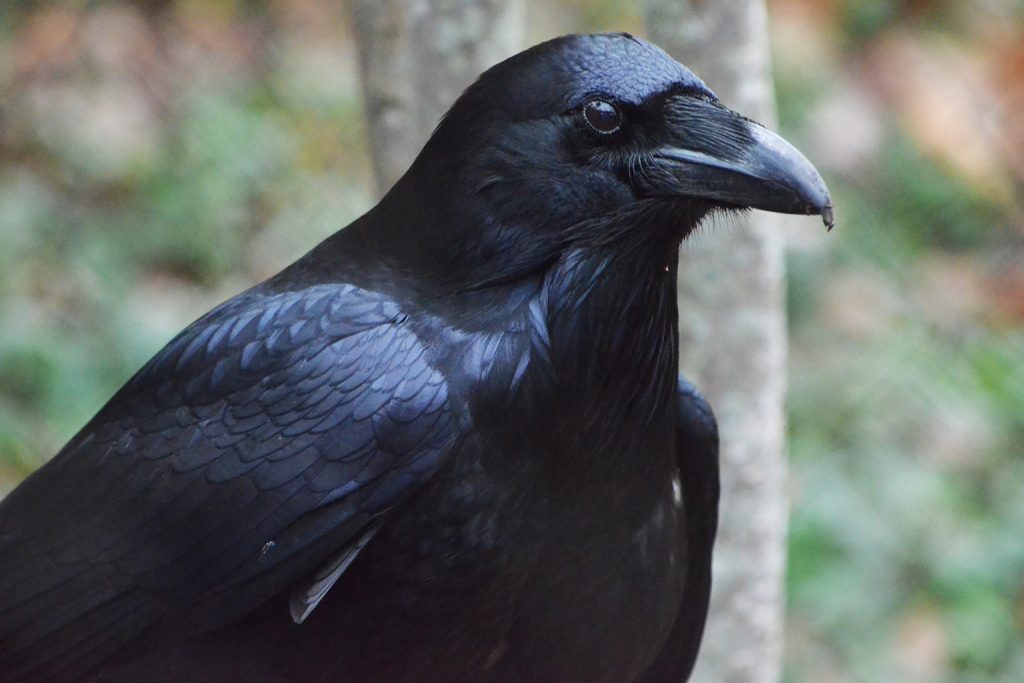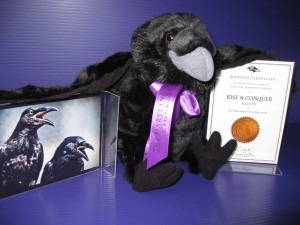Overview
“Where I live”
Ravens live throughout the world. They are one of the most widespread species on earth, living throughout North America and Eurasia, as far north as the Arctic and as far south as Central America and northern Africa. They occupy many types of habitat, including tundra, forest, desert, tropics, and mountains.
The Maryland Zoo’s Animal Embassy houses ravens that are hybrids. Animal Ambassadors Rise and Conquer also happen to be the live mascots for the Baltimore Ravens football team!
“How I live there”
Ravens can survive almost everywhere because they are such adaptable opportunists. They take advantage of any meal that presents itself and they adjust to different living conditions and threats. They are both predators and scavengers that will work cooperatively to secure a meal. If ravens encounter a polar bear feeding, for example, one or two birds may distract the bear while the others steal bits from the kill. Ravens scavenge carrion and garbage, steal birds’ eggs and dog food, feed on various kinds of plant matter, and prey mostly upon rodents and other small mammals.
Ravens are highly social, intelligent and curious birds. When food is scarce, they are most likely to be seen alone or in pairs. But wherever food is abundant, they will form loose flocks by day and roost together at night, sometimes in the hundreds. Ravens love to play and have been observed sliding down snow banks on their backs and playing tag, hide-and-go-seek and stick catching (while flying!)
Ravens notice and comment on everything around them. Their range of vocalizations may be second only to human speech. They can imitate some words and sounds such as a dog’s bark or a car driving down the road. Some ravens have learned to count. They have excellent memories that allow them to relocate food that was cached months earlier.
“Making my mark”
Ravens are members of the Corvidae family along with jays, crows, and magpies. It can be difficult to distinguish between a raven and a crow unless the two birds are sitting side by side. Ravens are generally much larger than crows and have wedge-shaped tails. Like crows, ravens are jet-black with iridescent purple and blue-green patches on their wings and throats.
“What eats me”
Ravens will defer to larger animals such as polar bears, wolves, coyotes and birds of prey such as eagles when challenged at a kill site. However, few animals actually try to prey upon ravens because they are quite capable of defending themselves. Because they scavenge garbage, steal dog food, and try to snatch bait from traps, ravens living near settled communities may be harassed or persecuted by humans who view them as pests.
Raising Young
Ravens form devoted pairs and may mate for life. They construct enormous nests of twigs and other found objects that can measure up to four feet across. A female lays from 4 to 6 eggs per clutch and remains on her nest incubating the eggs for about three weeks. During this time, her mate brings her food. Once the chicks hatch, they remain in the nest for about another four weeks. Both parents feed the chicks by regurgitating food and water stored in throat pouches.
Conservation
Ravens are listed as a species of least concern by the IUCN, the world’s leading conservation organization. They are protected in the U.S. under the Migratory Bird Treaty Act of 1918.
Taxonomy
- Kingdom: Animalia
- Phylum: Chordata
- Subphylum: Vertebrata
- Class: Aves
- Order: Passeriformes
- Family: Corvidae
- Genera: Corvus
- Species: spp.




